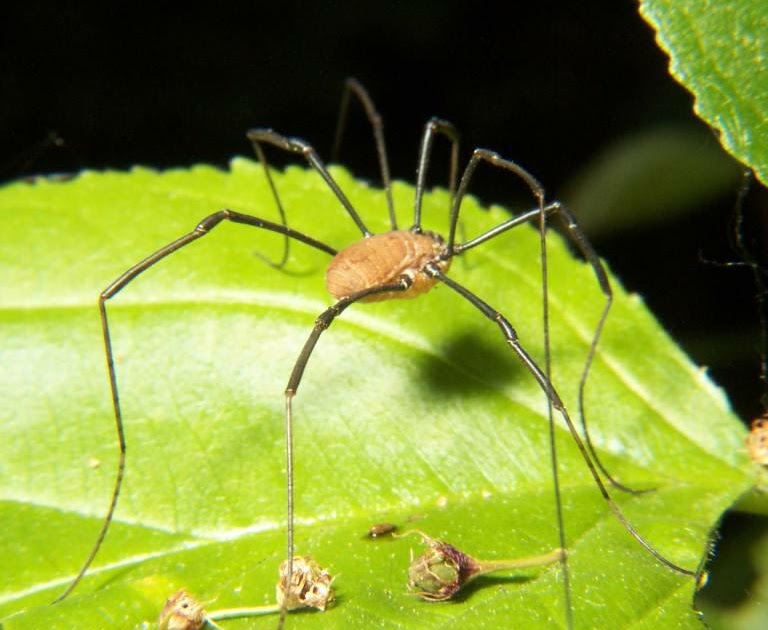Harvestman The Biology Of Opiliones Spider
1Museum of Comparative Zoology, Department of Organismic and Evolutionary Biology, Harvard University. 26 Oxford Street, Cambridge, MA. Opiliones ('harvestmen' or 'daddy longlegs') are a remarkable group of ara- chnids (electronic. A spider backbone phylogeny and rejects a prevailing paradigm for orb web. Arachnids: Harvestmen. Awesome little nuances of harvestman biology. Belong to entirely different order from spiders; they are members of the Opiliones.

This post is the fourth in an ongoing series on arachnids. Previously, this series addressed,, and. Additional posts on other weird, often overlooked or neglected groups of these creepy crawlies to follow. For a related chelicerate, but as far as science can tell, not an arachnid, see the post on.

The harvestman. Apna Desi Tv Colours Drama here. In the U.S., Canada, and the U.K. They are generally referred to as “daddy longlegs.” Less often, they are given the name “shepherd spiders”not because of an adoration of our wooly, farm animal friends, but because their conspicuously long, spindly legs are reminiscent of how, back in the day in Europe, shepherds used stilts to get a better vantage point for watching their flocksbecause in those times, people used tools at their jobs that are, today, relegated for the “circus arts” or whatever the fuck the is. More often than not, we tend to encounter harvestmen in relatively unflattering settings (dusty corners of garages or sheds, beneath untended vegetative landscaping, suburbia in general) and doing unflattering things, like clumsily wobbling off in a direction very loosely resembling “away” from you, teetering along like an intoxicated pre-teen who grew too fast for their coordination to catch up.
Within the scope of our lives, harvestmen are no more than the arachnids of unswept places, with vaguely unsettling, -like proportions. However, these thread-legged critters are far more interesting and diverse than most of us are aware of, and make up a unique group of arachnids that is regrettably seen as only a curious afterthought amid the dust bunnies and the nooks and crannies of exposed building foundations. Before addressing these awesome little nuances of harvestman biology, it’s perhaps helpful to get something out of the way: what harvestmen ARE and what harvestmen ARE NOT. The most important thing to understand from the get-go is that harvestmen are not spiders. They may have the eight, long legs, the roughly circular body suspended in the middle, and overall size and appearance one would associate with spiders, but harvestmen are a different beast altogether. Sometimes, in nature, something that looks like a duck, walks like a duck, and quacks like a duckis actually a chicken in a Daffy Duck costume. Harvestmen are spiders in the same way that Senator Mitch McConnell is a Galapagos tortoisethrough a superficial, yet striking, exterior resemblance and nothing more. Harvestmen are arachnids that belong to entirely different order from spiders; they are members of the Opiliones (which comes from “opilio”, which in Latin means “shepherd”) rather than the spider order of Araneae.
Not only are they in separate taxonomic groups, these groups aren’t even particularly closely related to one another. The order Opiliones is thought to be closely allied with the groupings comprising the scorpions and their closest relatives (like pseudoscorpions and the so-called “camel spiders”), together forming a subclass of arachnids known as the Dromopoda.
Generally speaking, a precursory examination of these little guys can lead someone to see the most obvious differences between harvestmen and spiders; harvestmen have body segments fused at a broad juncture into a bean-shaped structure covered in folds of exoskeletal armor, whereas spiders have two easily-defined segments (or “tagmata”)harvestmen also have a pair of tiny, simple eyes on top surface of the center of their body, while spiders have an array of different types of eyes all at the front of their head region (the “cephalothorax”). If you are at all familiar with harvestmen (especially if you grew up in the United States) you are almost assuredly acquainted with a frustratingly commonly shared bit of jarringly dramatic “natural history” about their supposed venomous bites.
The meme is typically thrown around on playgrounds, where harvestmen are frequently encountered in the warmer months, between children, who relay the idea that harvestmen are “the most venomous animals on the planet” but have mouths and/or fangs too small to adequately pierce human skin, so are of no danger. American Pageant 14th Edition Ch 25 West. This claim sits about as far from reality as you can get. Free Download Pangya Bonus Pang Hack Programs Windows there. Harvestmen do not only produce not a single drop of venom, they also don’t possess the mouthparts (fangs) that would allow them to envenomate anything anyways. Unlike spiders, harvestmen chelicerae (the appendages in Chelicerates like arachnids that loosely form the mouthparts used to apprehend, dispatch, and process prey items) are segmented and end in minuscule pincers instead of giant, hollow spears anchored to a swollen venom gland. These mouthparts are used to delicately carve up food, like a pair of blunt embroidery scissors, into pieces small enough to fit into their mouth hole. Harvestmen “bites”, when they rarely occur, are more “pinches” than anything else, and are about as deadly as a lick from a puppy.